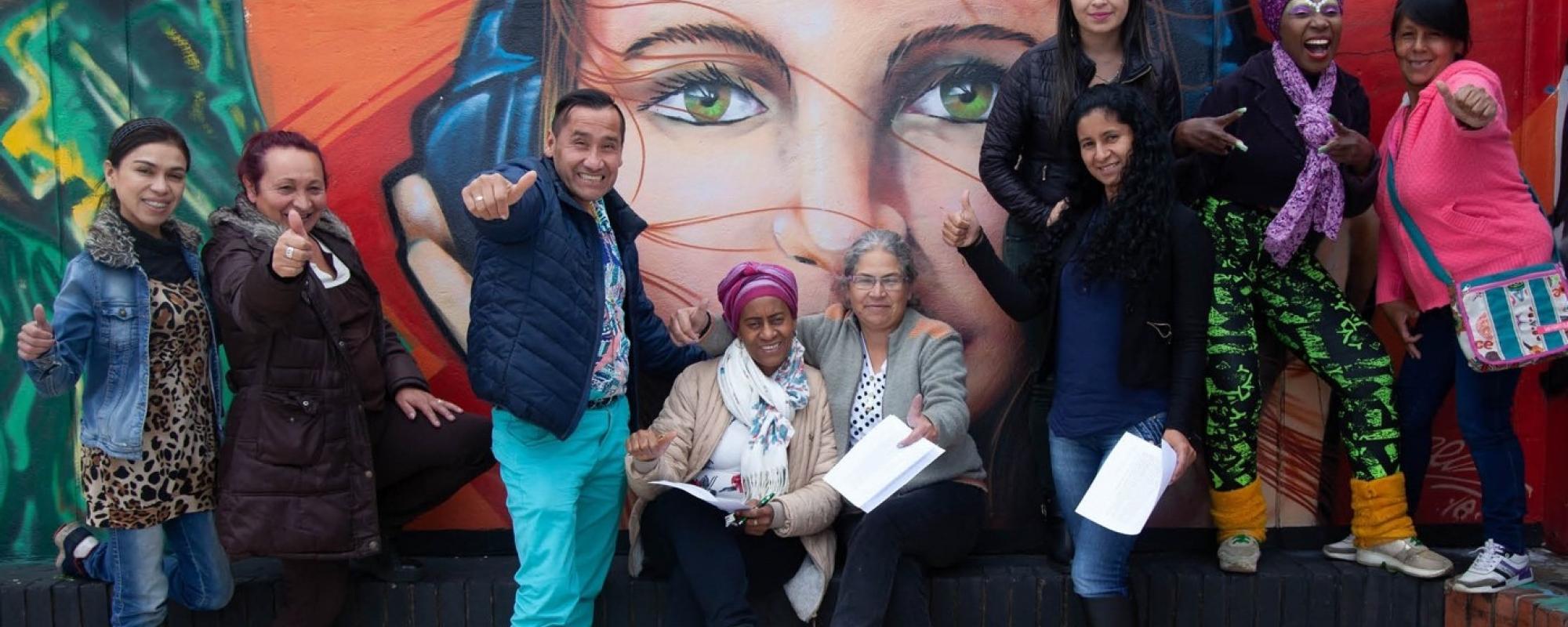How do people make future choices in settings of uncertainty? We posit that the performance of different strategies stored in the brain can be accessed through mental visualisation (or imagery). We further hypothesise that people who have experienced trauma face greater barriers in undertaking visualisation and hence stand to benefit more from the intervention. To test this theory, we developed a curriculum to teach entrepreneurs in Bogotá how to visualise the likely outcomes of their choices and study the impact of this intervention on their economic and psychological resilience.
We study whether visualisation improves economic and psychological resilience and whether it can be trained. Consistent with recent psychological findings that traumatic experiences undermine the capacity to visualise, we explore these hypotheses within a sub-population of entrepreneurs who have high rates of exposure to trauma and its associated symptoms.
Governments and international organisations invest vast amounts of resources in skills training to promote employment and entrepreneurship, with the World Bank spending USD $9 billion in recent years. However, these programmes have been largely unsuccessful in generating employment, increasing profits and transferring knowledge and skills. One reason may be that while most forms of business training address external factors, little interest has been paid to internal barriers to learning. This neglect may be driven by the fact that experimentation with new pedagogical innovations is costly and non-rival, and those who need them most – marginalised populations – are typically underserved by the market. Nevertheless, recent evidence suggests that translating psychological insights from a clinical to an educational domain has the potential for high impact. For instance, cognitive behavioural therapy promoted pro-social and forward-looking behaviour of high-risk men in Liberia (Blattman et al., 2017) and Chicago (Heller et al., 2017). An imagery-based educational intervention boosted effort in accumulating skills among low-income school students in Turkey (Alan and Ertac, 2018). A business training advocating a “pro-active” mindset in Togo saw microenterprise profits increase by 30% over two years (Campos et al., 2017).
Similarly, drawing on economics, neuroscience and psychology, there are many reasons to believe that visualisation can boost decision making and resilience. By visualisation, we mean the process of accessing perceptual information from memory through mental simulations, giving rise to the experience of “seeing with the mind’s eye”. Visualisation is a trainable skill developed in sports and clinical psychology that facilitates skill development, goal attainment and overcoming of obstacles. Information stored in our memory is drawn upon to imagine and predict future events. Clinical psychologists use visualisation – also known as imagery – and its powerful effect on emotions to re-script traumatic memories and build a repertoire of positive images, thereby enabling individuals to envisage a (realistic) positive future. Traumatic events can adversely affect the brain and its memory function, thus undermining the ability to project oneself into the future.
Beyond clinical and sport psychology, visualisation has a wide range of uses. Like in sports, a musician mentally rehearses to avoid physical injury from over-practising and reduces performance anxiety. A military officer mentally visualise to understand a highly stressful situation, envisage a desired end and select the best steps to achieve that goal. Mental rehearsing of actions is useful for entrenching habit and avoid the cost of real-life trial and error. Moreover, visualisation is a motivational and emotional amplifier. Imagining one’s own future behaviour (e.g. imagining voting) increases the chances of our enacting that behaviour in reality (e.g. actually voting).
This study seeks to test whether visualisation can be applied to an economic setting and improve economic and psychological resilience.
Our inter-disciplinary team designed a ten-session programme that trains micro-entrepreneurs in the use of visualisation to practice and master skills, adopt the perspective of others and increase motivation by raising the emotional content of goals.
We test whether visualisation can be taught and whether it improves psychological and economic resilience by implementing the curriculum through a randomised control trial with approximately 2000 aspiring entrepreneurs in Bogotá, Colombia. To control for the informational content of the programme, half of our sample either received business-as-usual training or were assigned to a pure control group. The intervention was implemented in two blocks, the first commencing in July 2019 and the second in September 2019.
Our sample is made up of low-income entrepreneurs who either have an existing business or a stable business idea. The majority of our sample has been exposed to past traumatic events, including armed conflict and forced displacement.
